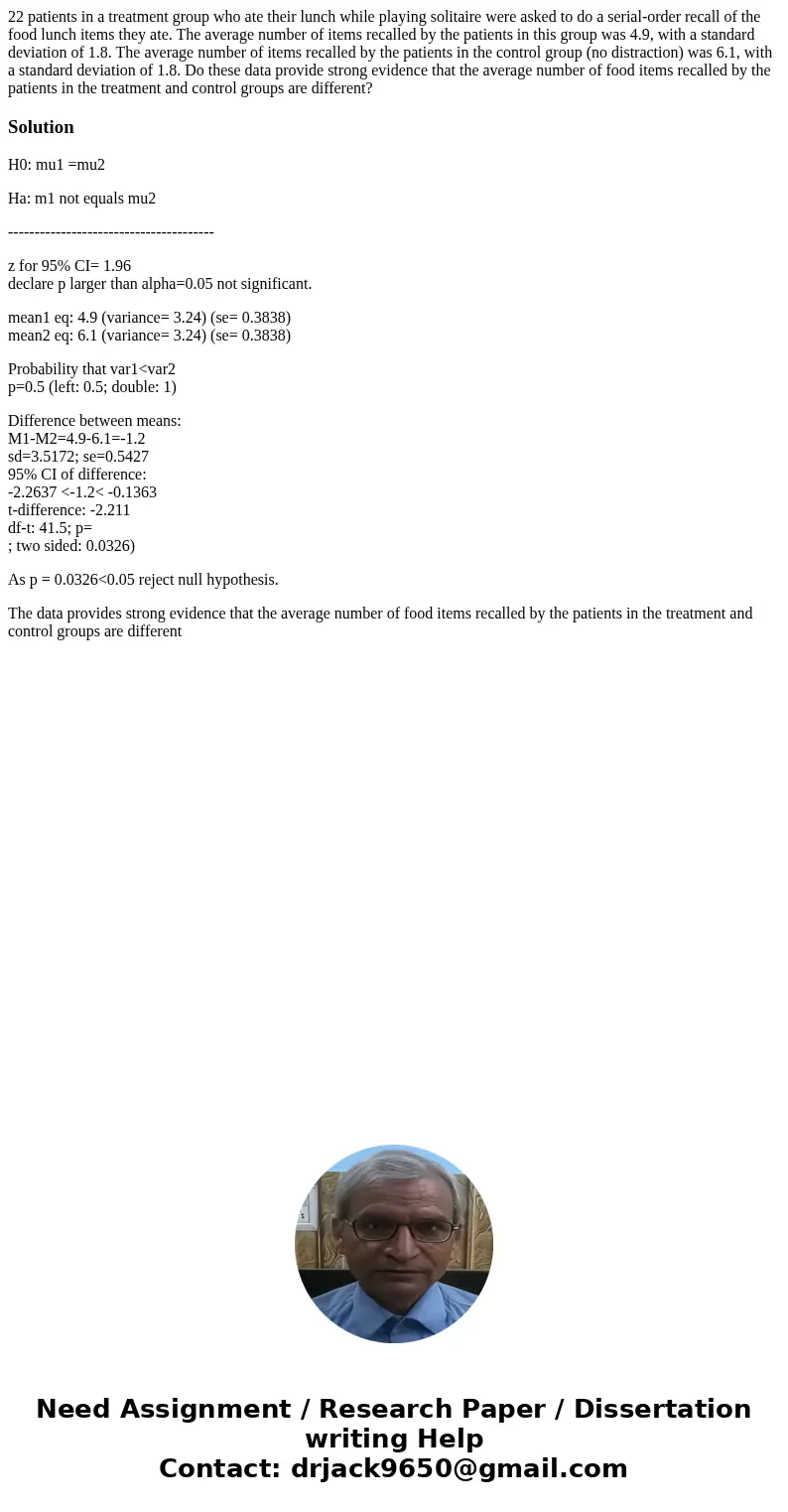22 patients in a treatment group who ate their lunch while p
22 patients in a treatment group who ate their lunch while playing solitaire were asked to do a serial-order recall of the food lunch items they ate. The average number of items recalled by the patients in this group was 4.9, with a standard deviation of 1.8. The average number of items recalled by the patients in the control group (no distraction) was 6.1, with a standard deviation of 1.8. Do these data provide strong evidence that the average number of food items recalled by the patients in the treatment and control groups are different?
Solution
H0: mu1 =mu2
Ha: m1 not equals mu2
---------------------------------------
z for 95% CI= 1.96
declare p larger than alpha=0.05 not significant.
mean1 eq: 4.9 (variance= 3.24) (se= 0.3838)
mean2 eq: 6.1 (variance= 3.24) (se= 0.3838)
Probability that var1<var2
p=0.5 (left: 0.5; double: 1)
Difference between means:
M1-M2=4.9-6.1=-1.2
sd=3.5172; se=0.5427
95% CI of difference:
-2.2637 <-1.2< -0.1363
t-difference: -2.211
df-t: 41.5; p=
; two sided: 0.0326)
As p = 0.0326<0.05 reject null hypothesis.
The data provides strong evidence that the average number of food items recalled by the patients in the treatment and control groups are different

 Homework Sourse
Homework Sourse